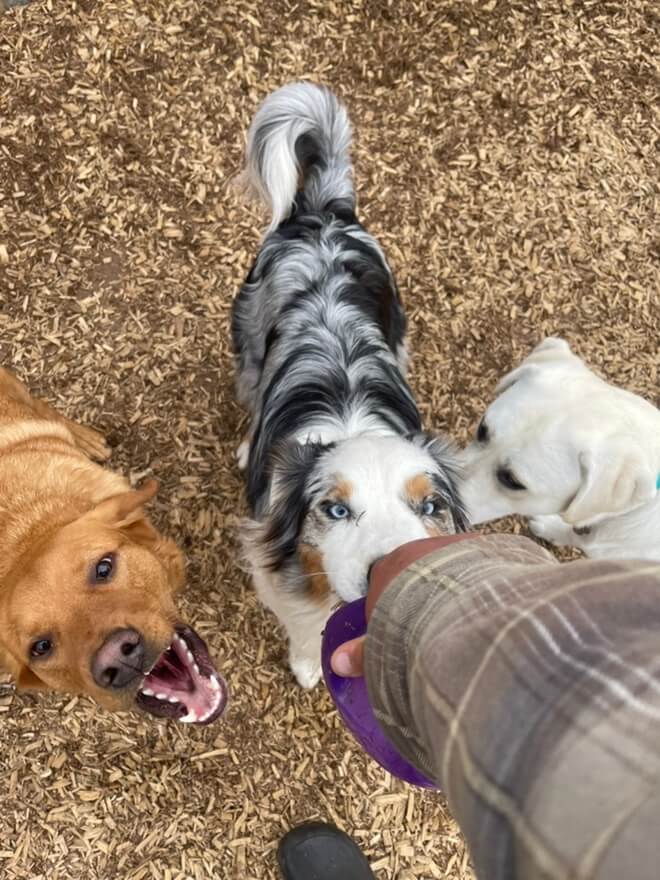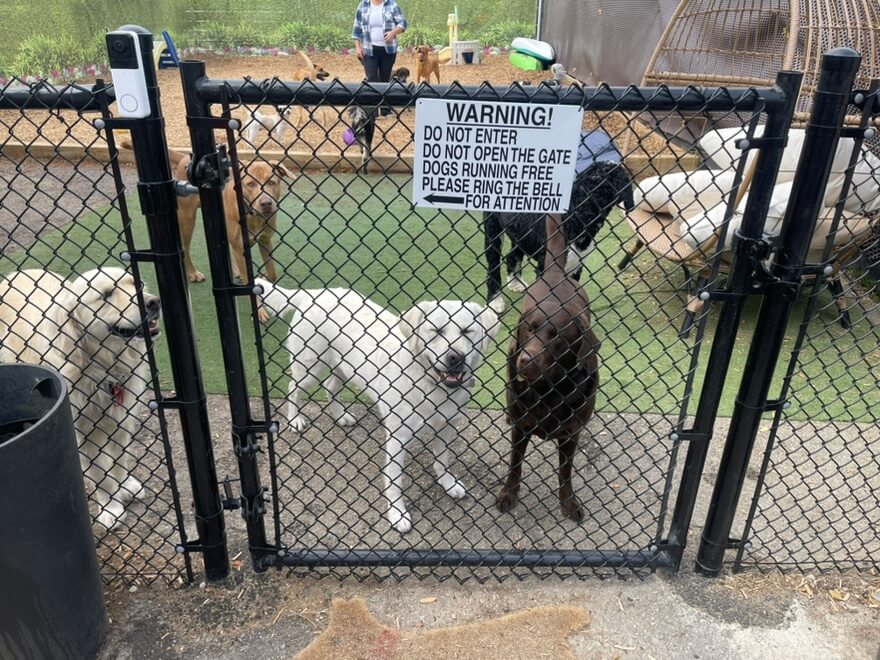Labrador Retriever Dog Daycare in Burlington
Labrador Retrievers are outgoing, energetic, and full of love — and they need more than just a walk around the block. At Playday Pups, we give Labs the space, structure, and stimulation they crave.
We’re a boutique dog daycare in Burlington, owned and operated by Tara and Dave. With a fully fenced yard, two indoor play spaces, and a handpicked group of friendly dogs, we’ve created the perfect setup for active breeds like Labs to play hard and rest easy.
Outdoor Adventure – Labs love to run, chase, and sniff — and our big fenced yard gives them all the room they need to do just that.
Water Play (Weather Permitting) – Got a Lab who loves water? Ours do too. When it’s hot, we bring out kiddie pools for splash time.
Structured Daycare – We keep things balanced with scheduled play sessions, rest times, and chill-out periods. Labs can go all day if you let them — but we know when to pause.
Small, Friendly Groups – We only accept social dogs that get along well with others. Your Lab will be in good company.
Hands-On Care – We’re always with the dogs, actively managing play and making sure everyone is having a great (and safe) time.
🏡 Personal Care in a Boutique Setting
Playday Pups started as a home-based daycare during COVID, and while we’ve expanded, we’ve kept the same personal touch. We know every dog in our care — and we’ve got plenty of happy Labs who come back week after week.
Located on Advance Road near Guelph Line and Mainway, we’re open every day from 6 AM to 8 PM with flexible drop-off and pick-up options.
✨ Meet & Greet Required
To keep our pack safe and happy, all new dogs go through a short meet and greet — usually on a Monday or Friday evening between 6–8 PM. After that, we’ll recommend a trial half day or full day.
🐶 Labradors Fit Right In
Whether your Lab is a playful pup or a seasoned fetch pro, they’ll love our space, our structure, and our pack.
✅ Balanced Daily Schedule – A mix of play, downtime, and enrichment keeps pups happy and well-behaved.
✅ Spacious Outdoor Yard – Our fully fenced yard gives dogs room to run, wrestle, and explore safely.
✅ Indoor Play Areas – Rain or shine, our two indoor spaces are perfect for energy release and indoor games.
✅ Built-In Breaks – Scheduled nap and chill times help dogs avoid burnout and stay calm.
✅ Hands-On Owners – Tara and Dave are here every day, treating each dog like one of their own.
✅ Well-Matched Pack – Every dog meets the group before joining to ensure a safe, friendly vibe.
✅ Stay Connected – Our app sends you daily updates, photos, and messages.
✅ Convenient Location – Easy to find near Guelph Line & Mainway, with flexible pickup options.
✅ Your Routine, Respected – We match your feeding, medication, and crate routines—no unnecessary changes.
🐶 We keep our numbers small to maintain a boutique experience, so reach out today to book a meet-and-greet and see if Playday Pups is the right fit for your dog!
🐾 Take the First Step Toward Tail-Wagging Days
Ready to explore daycare with us? Filling out the form below helps us learn a bit about you and your pup. It’s the first step toward joining our safe, structured, and boutique-style dog daycare. Once we receive your info, Tara or Dave will personally reach out to schedule a meet-and-greet—a casual visit where you’ll get to see our space and we’ll make sure your dog feels comfortable with the group.
🐶 No pressure—just a friendly hello to see if we’re the right fit for your four-legged family member.

